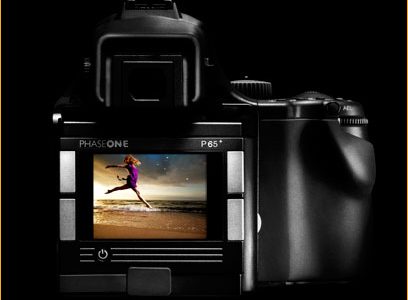with Additional Reports
by Michael Reichmann
Mark Dubovoy is winging his way across the Atlantic (boy, are his arms tired), to attend the bi-annual Photokina show in Germany and report on it exclusively forThe Luminous Landscape. He will be reporting on hardware, software and general developments of interest to our readers.
Michael Reichmann isn’t attending this year due to a scheduling conflict, but will be filling in here with news releases and observations of interest as they become available.
If you’re interested in the world of speciality cameras, medium format, large format, image processing, lenses, printers, papers and other pro gear this will be the place to find out about what’s new and what’s coming.
This page will be updated continuously during the week of September 27 – October 1. The most recent reports are found immediately below.
Saturday, September 25, 2010
Last Updated at 3 pm EDT

Today I saw some of the most beautiful prints I have ever seen. They are made by a company called Fachcolor Bühler. No one at the booth spoke English, so I had to make do with my poor German. Here is what I found out:
They are using Kodak digital photo paper with a LightJet printer and then they mount the images using a silicon based glue on anti-reflective Luxar glass. I have seen many LaserJet prints in the past, and they have never held a candle to what I saw today.
The Luxar glass is very thick and they hone the edges and the corners, so it feels very smooth. The prints appear to be sandwiched between the glass and a plastic board similar to Sintra in the back. The thickness of the prints as they were showing them appeared to be roughly 3/4 inch. A long aluminum rail mounted in the back is included. For hanging, a separate aluminum bar with complementary cross section is mounted on the wall, and the bar behind the picture mates perfectly for secure hanging.
The photographs exhibited at Photokina were shot by a photographer named Frank Sirona. Frank uses a 5×7 inch film view camera. The use of a large format camera by an excellent photographer definitely contributed to the high quality of the images, It appears that Frank was instrumental in convincing the company to use anti-reflective Luxar glass.
I am usually afraid of large pieces of glass for safety reasons, but these images appear to be very sturdy (I still would not like to see what happens if one of these things falls down, but somehow they felt quite safe and secure even as displayed on easels). Having the front of the picture mated directly to the glass with the special glue, makes the images look brilliant. Sharpness and Dynamic Range are outstanding. So is color saturation.
These folks seem to have figured out how to use conventional photo chemical processes to produce absolutely stunning prints. As best as I can determine, prices are based on a simple model of 480 Euro per square meter. You measure the area of your print and that gives you the price per this model.
They told me that they can ship all over the world. They have someone who makes special wooden crates for their prints.
Mark Interviewed on Photokina TV
Minox
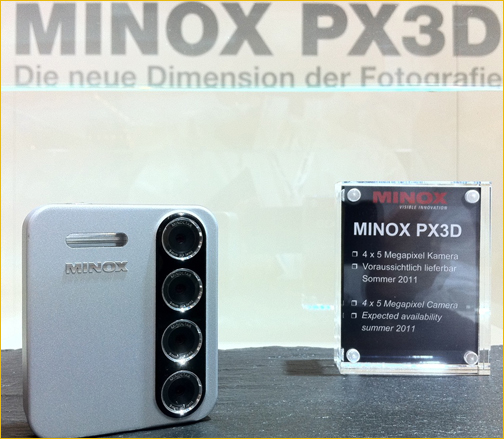
Minox showed a prototype of a very compact camera, the PX 3D that is claimed to produce very high quality 3D images. It is scheduled to start shipping in the Summer of 2011. Price was not disclosed.
Zeiss Compact Primes
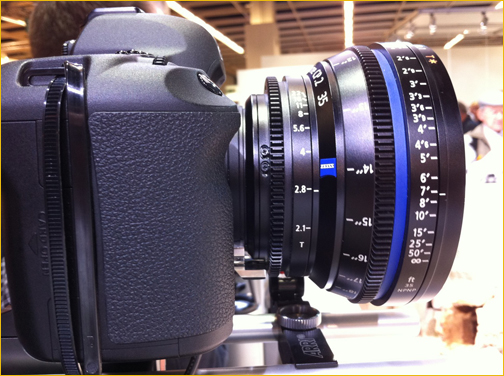
As shooting high quality video with DSLR bodies becomes ever more popular, Zeiss is introducing a series of “Compact Prime” lenses in a bewildering array of configurations, focal lengths and maximum apertures. There seems to be a lens for every application, every taste and every camera. The lenses look quite impressive and exude quality. They are rather large. Looking at the images shot at the show, the image quality is superb, with beautiful Bokeh when the aperture is set for shallow depth of field. As you can see from the pictures, they can be operated with very high precision zoom and focusing controls.
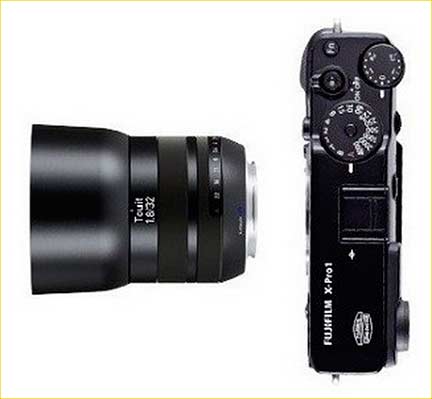
Hasselblad
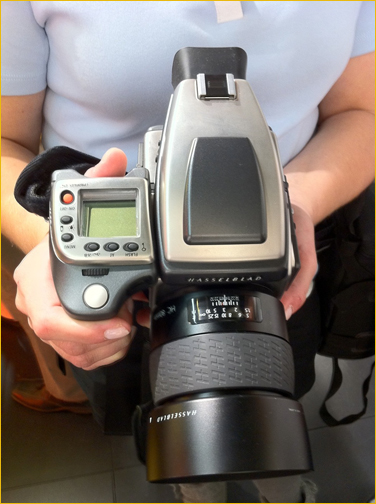
Apparently, I am not the only one that has been complaining that the Hasselblad H bodies have a “plasticky” feeling unbecoming of such an expensive high end camera. It looks like Hasselblad is finally listening. They told me that they tried to make an all black camera, but it did not look good. So, at their Photokina booth they were showing a white camera, a “Ferrari Edition” red camera with a miniature Ferrari shield on the side, and a stainless steel version where they simply did not paint some of the parts.

The red camera is too gaudy for my taste, so I did not take a picture of it. It is probably meant for sale in the far east. The white camera reminds me of the finish of white appliances. I personally do not like it, but it is a vast improvement versus the current stock version. Apparently, they have already received a number of orders for white cameras. To me, the stainless steel version looks and feels the best. In fact, a number of people kept caressing the finely brushed stainless steel finish, and telling others not just to look at it, but touch it.
My humble message to Hasselblad: Don’t bother to paint the cameras. Save the money and the hassle. The unpainted stainless steel version looks and feels better than any of the painted versions.

In other news from Hasselblad, I had a private demonstration of their upcoming iPad application. It is still in beta form, but the functionality is pretty clear at this point. The way it works is as follows:
You need a computer that is on a network that the iPad can access. A new version of Phocus to be introduced simultaneously with the iPad application will allow the iPad to connect with the computer. A Hasselblad camera is tethered to the computer. Once the iPad and the computer are paired, all the images can be seen on the iPad and can be zoomed in to 100%. They can also be star rated and emailed from the iPad. In my view, the more exciting feature is that the camera can be controlled remotely (and wirelessly, of course) from the iPad. The picture shows what the application looks like on the iPad screen: One of the images is shown in the background, with the camera controls in the foreground.
I hope this is the beginning of a trend, where we will see better and more sophisticated ways to use the iPad to control cameras and view, catalog, share and edit images.
CAP Cam
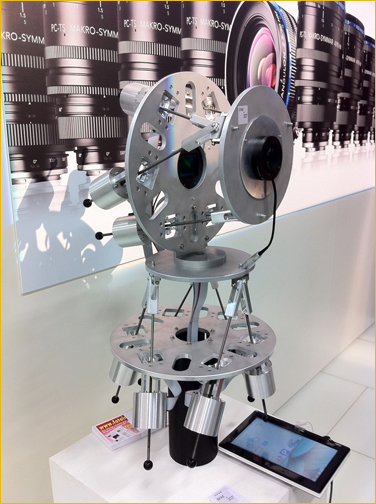
It is Saturday afternoon in Cologne, and one can easily tell that all the exhibitors and members of the press (including yours truly) are suffering from exhaustion. To make matters worse, it is the first weekend day when the public can attend, so the place is packed to the gills. The crowds today are massive. The show will stay open for approximately one more hour today, at which point I will head back to my hotel, pack and start preparing for my trip back to the West Coast tomorrow.
Therefore, this will be my last update to the Photokina blog, and I would like to end it with a very different product that may be a harbinger for the future, a total yawn, or quickly become a relic of the past. It is called the CAP Cam (as in Computer Aided Photography Camera) and it will be made by a new company called GFAE. Apparently, the camera was designed by the original designer of the Sinar P2.
The camera shown in the picture is a prototype, but the final production version is expected to look exactly the same, except for the (missing in the picture) bellows between the front and the back standards. As a reference for size, the hole in the back is made to hold a 6×6 cm digital back (a Leaf back was mounted on the camera, but not visible in this picture).
So, what is this strange contraption? It is a view camera with computerized controls using stepper motors in 12 axis (!). It is incredibly robust, you can try to move anything with all your strength, and simply cannot do it. This thing is solid as a brick of Uranium. It is incredibly accurate too. The camera consists of two modules. The upper module can be used by itself on a tripod, but adding the lower module one can do much more sophisticated things. All functions are controlled with the electronic pad shown in the picture.
The workflow with this thing is blazing fast. For example, you can quickly focus on 3 objects of interest and in about 1 second the camera does all the tilts, swings and shifts necessary to place the 3 objects in the focusing plane with minimum distortion. You can do all kinds of fancy things for studio photography, for scientific photography, for panoramics, and so on. All the things that anyone might agonize about in terms of image management, this camera can do in a snap.
The CAP Cam is probably the most innovative change to the view camera in 100 years.
By now you might be wondering about the weight and cost. The top unit in the final production version will weigh 3.5 Kg (about 7.7 lb.). The bottom unit will weigh a little bit less. In terms of pricing, they expect the top unit to retail “somewhere between 5,000 and 6,000 Euro, with additional cost for the bottom unit”. The company says they will start shipping in January.
It will be interesting to see if this thing takes off. Even if it does not take off as a view camera, I wonder if some derivative of this technology could potentially trickle down to electronically control Tilt/Shift lenses in the future…
Thanks!
As a final note, I would like to thank all the readers that have been following the blog and have contacted me with very kind comments.
I also want to give a word of special thanks to Michael Reichmann for all the work he has done helping me with this blog. Unfortunately, the internet connections both at the show and at the hotels in Cologne are woefully inadequate. The infrastructure is poor, and they do not seem to be able to handle the traffic of a show like this one. This has forced me to send Michael multiple emails whenever possible and he has been doing the work to post the blog on the site. Thank you Michael.
Friday, September 24, 2010
Last Updated 9 am EDT
Leica
The Leica M9 Titanium is on prominent display in a glass case at the center of the Leica booth. As far as my personal taste goes, this is without question the most beautiful 35 mm size camera I have ever seen. It is simply drop dead gorgeous, one must see it in the flesh to really appreciate it.
However, this machine is not your standard M9 clad in Titanium. It adds some new features and new technology, such as a built-in LED that illuminates the different focal length viewfinder frames. The frames are way better than in the standard M9, and you do not have to depend on the light coming in from a separate window. The camera also includes a beautiful sling to carry it, a terrific built-in strap that eliminates the need for an extra grip and several other refinements.
According to a top executive at Leica, they are breaking new ground. His analogy was that automobile companies, for example, will build a concept car and never sell it. Leica has decided to make some concept cameras, and sell a small number of copies. In the case of the M9 Titanium, 500 copies. What this means is that some of the new features are likely to trickle down to future cameras.
If you have to know, the price of the M9 Titanium is 5 times the price of a standard M9, but you do not need to worry. As of yesterday they had more than 1,500 orders and only 500 cameras will be made.
On a different topic, many people were hoping that the leaf shutter lenses for the Leica S2 would finally be available for sale by now. I did get to use a final production version of these lenses at the Leica booth. The general consensus is that the lenses are ready for production, but so far they have only been tested to 40,000 cycles, and Leica wants to test them to 100,000 cycles. My best guess is that it will be at least next spring before these lenses start to ship. In the meantime, the non- leaf shutter 35,70,120 Macro and 180 are now available.
By the way, kudos to Leica for including in the firmware the option of a delay between the time that the focal plane shutter opens and the leaf shutter makes the exposure. This allows you to move the mirror up, open the focal plane shutter, wait for the camera to stabilize and then release only the leaf shutter to make the exposure.This reduces vibration to an absolute minimum.
I took some shots with the new 120 Macro, and all I can say is that this lens is spectacular. The design is a descendent of the legendary 100 Macro lens for the old R system. With the improvements on that superb design, the MTF graphs and the image quality of the new 120 are truly remarkable.
Fuji

The X100 camera is definitely not all about retro. First of all, the optical viewfinder is as good as any I have seen. Besides the optical image being outstanding, the LCD displays at the bottom are extremely clear. The most interesting feature of the camera, however is that when you flip a lever in the front, near the viewfinder window, the image through the viewfinder automatically changes from optical to EVF. The EVF image is enlarged to 100% and is coming straight from the sensor, so it is very good in terms of judging focus and the look of the final image. This “hybrid” optical/EVF viewfinder is a great idea, and very well implemented in this camera.
You can download the X-100 brochure PDF here.
Linhof
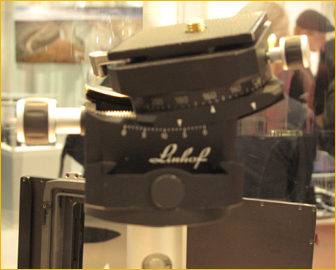
It looks like Linhof has taken notice of the success and the great design of the Arca Swiss C Cube head. They were showing under glass a prototype of a similar head. As far as I can tell, the lateral tilt is based on the base of the M679 CS camera, which is extremely smooth and precise ( I think it is smoother than the ARCA head). The rest of the design looks similar to the Arca head, but the bubble levels and the knobs look better. Whether it is put into production, or how it will be priced, we will have to wait and see. Linhof is not talking.
Rollei
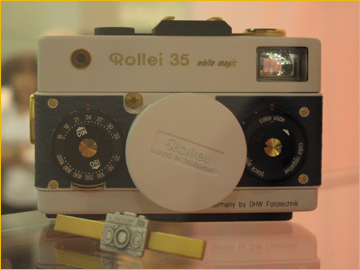
There are always surprises at Photokina, and one of them this year is that Rollei is back! They are showing the full range of their well known Medium Format cameras from the 6008 series to the Hi 8. They are also showing a number of versions of the old Rollei 35 film camera in all kinds of special colors and finishes, such as red, white with gold and so on. At this point it is unclear how Rollei will survive in the digital era. It will be fun to watch.
Schneider

Schneider is showing three delicious Tilt/Shift lenses in PhaseOne/Mamiya mount. They were specifically designed for the PhaseOne DSLR and PhaseOne backs. Although they look quite imposing and big, they are incredibly light. Somehow, the alloys they are using, as well as the glass are ultralight. Focal lengths are 50mm, 90mm and 120mm. The focusing rings and the tilt/shift controls are smooth as butter. According to Schneider personnel, these are some of the sharpest lenses they have ever produced. I can hardly wait to get my hands on these lenses, particularly the 120 for a formal field test.
Thursday, September 23, 2010
Last Updated 9 am EDT
Seitz

Mark and Friend
The Seitz 6×17 panoramic camera has been greatly improved. It now records a 160 Megapixel image in as little as 1/4 second. You can just about count on exposures that are less than 1 second, which for a scanning back is extremely fast.
The machining, fit and finish of the camera is extraordinary. It does not feel too heavy for handhold use, although it is obviously better on a tripod. The prints shown at the show are simply stunning. They easily beat anything I have seen from stitched panoramics.
Prices for a full system including camera, Schneider lens and digital back start at 21,000 Euro and top off at 32,500 Euro, depending on the type of scanning back.
Arca Swiss
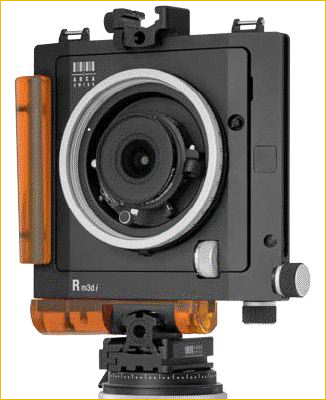
I finally go to handle the Rm3di and the Rm2d. The Rm3di is essentially the same cameraMichael and I tested, but with one major improvement: The front of the camera can be detached and rotated 90 degrees. This means that you can configure the camera to have front swing instead of front tilt. The camera looks and feels as good as ever, but I still think that the focusing mechanism requires too many turns.
The Rm2d is a beauty. It looks like a smaller and much lighter version of the Rm3d. The only thing you loose is that it has no front tilt or swing. I would say that for people that do not require front tilt, this camera is a winner. Very light and very compact. Solid as a one piece billet of “unobtanium” (or whatever alloy they use).
List prices are 3,950 for the Rm3di and 3,100 for the Rm2d.
One really interesting item in the ARCA booth is an early production version of a new head called the D4. It comes in two versions, the D4 and the D4 M. In the M model, all movements are manual only. In the D4, the movements can be controlled either manually or with micrometers.
I have been a huge fan of the ARCA Swiss “C Cube” head. I have been using one for many years with great success. Everyone I know who owns a C Cube loves it.
The R4 may be even better. It has the same movements as the C Cube, but the knobs are larger and much more comfortable. Unlike the C Cube, it has 2 additional locking knobs. When the knobs are locked, the micrometers are engaged and the head moves by turning the standard micrometer knobs. Like the C Cube, once in position, the head will stay there, there is no need to lock it in position. In other words, using the micrometer knobs the head behaves the same as a C Cube. When the separate locking knobs are released, however, the head moves freely. Very much like an unlocked ball head. This allows you to do a rough positioning by moving the head freely, then you lock the knobs and at that point it acts just like the cube for fine adjustments. Beautiful design and execution.
The good news is that the R4 weighs less than half of what the cube weighs, and it will also cost a lot less. Expect it to be available by the end of the year for around $600 Euro.
ARCA has significantly improved its plates as well as the locking system for these plates. The new plates and ARCA camera monorails just snap into place and will slide back and forth, but not come off. A further small push on a side lever locks the plates completely. This is a very effective system and much nicer, in my opinion, than the older flip lever design. The new plates are much narrower and longer. The new system can be easily retrofitted to all older ARCA heads. They also have a dual system that will accept both, old and new mounting plates.
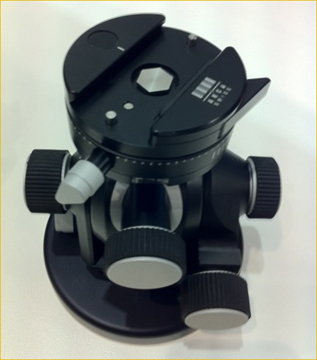
HP
HP has announced the Designjet Z6200 Photo Printer and HP Vivid Photo Inks. The Z6200 is claimed to be 50% faster than its predecessor and prints the same output quality while using up to 44 percent less ink.
Along with the Z6200 HP has introduced new HP Vivid Photo Inks which offer improved gloss levels and uniformity as well as the addition of chromatic red to the 8-color printing system, to provide a wider color gamut and enhanced skin tones.
Manfrotto
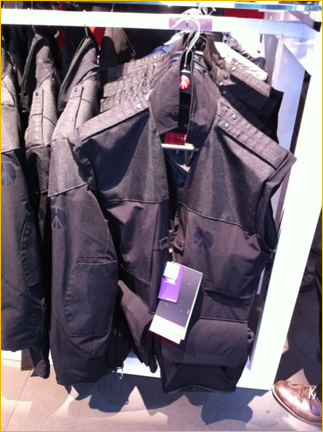
It seems that tripod manufacturers are determined to produce the best photo jackets and vests. I personally purchased the Gitzo jacket about a year ago, and I have found it to be better than anything else on the market.
However, Manfrotto has just introduced a pretty impressive line of photo vests and photo jackets. These are definitely not your father’s modified fishing vests. They are beautifully made and quite practical. If you do not mind the “Ninja look”, these are well worth looking into.
Cambo
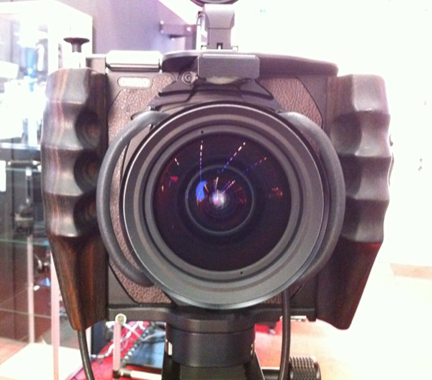
Cambo has been pretty quiet lately, but they have some very interesting new products. Besides the ever expanding line of camera platforms, they have a very nice new technical camera: The RS Wide. It is a great improvement over the old wooden handle machine. Much smaller and more ergonomic. The back has a good amount of shift and rise/fall.
Although not as finely machined as an ARCA Swiss or an ALPA, the Cambo offers a good alternative at a more moderate price of 1,975 Euro.
The more interesting thing about the Cambo system is the Rodenstock Digaron 32 mm lens with tilt/shift in the lens mount. I have never seen a lens for a technical or view camera that includes tilt/shift in the lens mount itself. It appears to me that this could be done for other manufacturers of technical cameras. This is a very interesting alternative that could eliminate the need for tilt/shift in the camera body. This particular Rodenstock lens is quite expensive at 6,890 Euro, but it shows exquisite quality on the groundglass and in sample files.
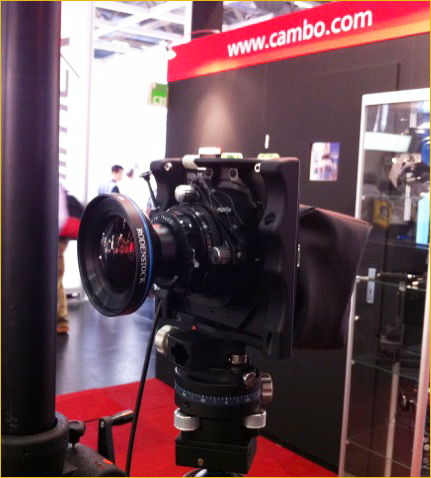
Wednesday, September 22, 2010
Last Updated – 2:30 pm EDT
This is day two of Photokina and all of the major announcements have been made. But now the fun part begins, finding the products from smaller companies that haven’t the marketing and PR budgets to make a big splash on day one.
Mark is walking the miles of isles to find these hidden gems, and will be filing stories on them over the next couple of days. Because of the time difference between Germany and North America some items may not appear here until the following day. Stay tuned.
Nap Time

Night has fallen in Germany and Mark is now off to enjoy a well-earned night’s sleep. He sent along this picture, but I’m not sure if this is his hotel room, or a rest area for weary show attendees.
Much more tomorrow.
Sony
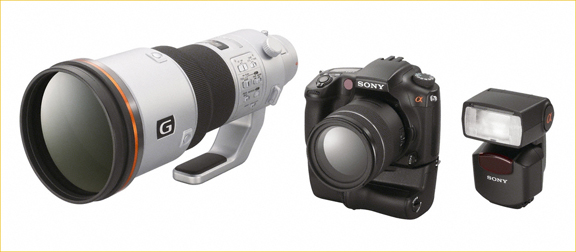
Sony has a lot of new gear on display, including prototypes of some E series lenses that may not ship for a year or more. These include both Zeiss and Sony G series glass.
The A series 500mm f/4 is on display (again). Maybe its now close to ship date!
Also on display was an unnamed prototype of a next-generation SLT body (A77?) No spec, but this clearly shows that Sony is committed to a mirrorless future.
Does this mean that there won’t be a pro-level A900 replacement DSLR? No word is forthcoming, and it could go either way. Sony is clearly excited about their translucent mirror technology though, and it’s hard to imagine that they won’t want to push it throughout their lineup.
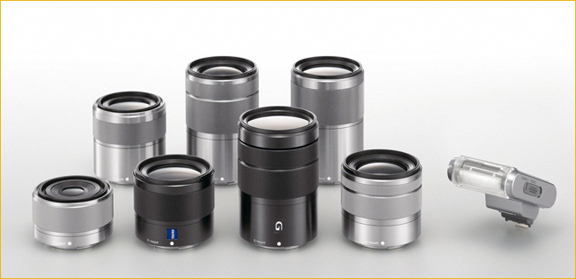
Phase One
Phase One is not exhibiting in their own booth at Photokina this year. They have held of, planning to announce some new products later in the season. Their new policy is not to announce unless they can provide samples to dealers and are close to end-user delivery.
But, as sometimes happens at trade shows, following a pre-Photokina sales meeting one of their dealers spilled the beans on some new lenses that will be coming in 2011. Since the cat is out of the bag, these will be…
– Phase One 35mm f/3.5 D
– Phase One 120mm f/4 D Macro Autofocus
– Schneider 150mm f/3.5 LS
– Schneider 120mm f/5.6 Tilt-Shift lens –previously announced
Bear Straps

One of the little gems that Mark has uncovered is the Bear Strap from Sun Sniper. As you can see from the picture, it allows you to carry several DSLR bodies comfortably and very securely. Many pros really like this strap. Seems to be very well made. Although it seems strange at first to have the side bodies hanging upside down, this actually makes it much easier to grab them in a hurry because they end up in the proper position.
Hasselblad
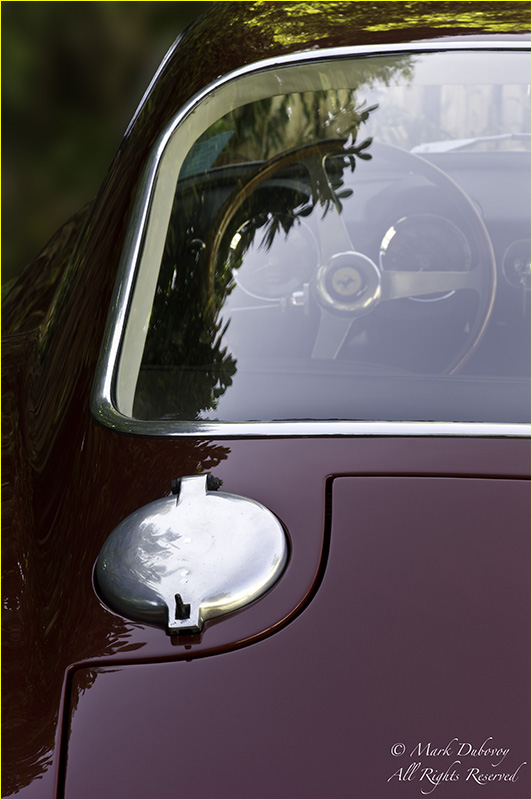
Hasselblad announced a Limited H4D Ferrari Edition, which will be limited to 499 units. We assume that this is the number that the company feels it will be able to sell in the Chinese market. Enough said.
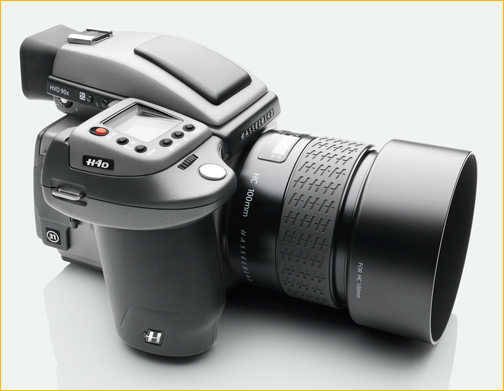
On a more practical note, Hasselblad has announced the the H4F-31, a bundle of the camera, 80mm lens and back which will retail for under $10,000 Euros, or US $10,000. Just the thing for the 35mm DSLR shooter looking to step up to medium format digital.
And for those with legacy CF lenses, the bundle is available with the Hasselblad CF lens adapter instead of the 80mm HC lens at the same price.
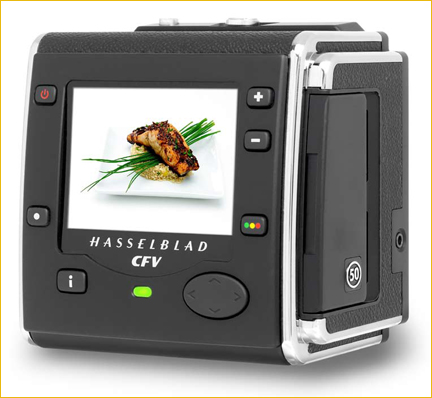
Finally, for those still using V series Hasselblad bodies the company has now added their 50 Megapixel sensor in a new back called the CFV-50, featuring a sensor that is twice the size of those in 35mm full-frame DSLRs.
Leica
It’s taking a while, but Leica continues to fill in its medium format S series lens line up.
Introduced just before the show opened, the APO MACRO SUMMARIT-S 1:2.5/120 MM promises to be an astonishingly good macro as well as general purpose lens. Have a look atthe MTF cartsand weep. The 120mm macro costs 5280 euro.
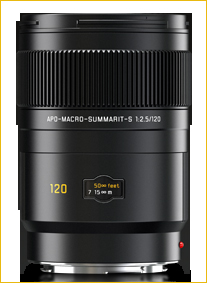
Carl Zeiss

Carl Zeiss has recognized the growing trend towards video production using DSLR cameras. Introduced earlier this year, their new Compact Prime CP.2 lenses are intended for video pros using HDSLRs.
One of the unique features of the Compact Prime CP.2 series is that it allows one to change the camera mount, which means you can use the lenses not only on cameras with a PL cine mount but also on HDSLR cameras with Nikon F or Canon EF mounts. Carl Zeiss has announced that the Compact Prime CP.2 lenses will also be made available with Micro 4/3 and Sony A mounts.
Tuesday, September 21, 2010
Last Updated – 10 am EDT
Adobe
Adobe today announcedElements 9 and Premiere Elements 9for Windows and Mac. These are available as standalone products or as a single retail package.This release also brings Premiere Elements to the Mac platform for the first time. The products are available separately for US$99.99 or as a bundle for US$149.99.
Sony
As promised a few weeks ago by Sony executive Ichiro Takagi, Sony has announced a firmware update for the NEX-3 and NEX-5 cameras.
The new firmware (mid-October release) is intended to addresses some of the concerns expressed by both reviewers and users about the cameras’ user interface and video mode deficiencies. This includes allowing the aperture to be set when video shooting and the assignment of certain buttons to various functions. The cameras will also now autofocus when using the Sony A Series SAM and SSM lenses (using the optional LA-EA1 Mount Adaptor), which have built-in focus motors, a very pleasant surprise.
Quite a few new A series and E series lenses are being shown in prototype form, with releases due during 2011 and 2012! More on these as details become available.
Epson
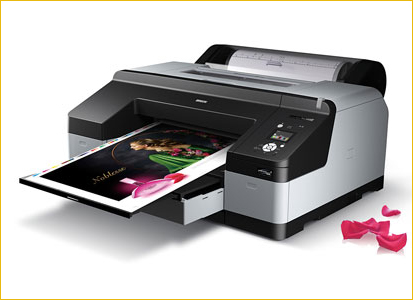
Epson has announced three new printers, including the long-awaited 4900 printer. This printer uses the same technology as Epson’s 7900 and 9900 large format printers in a 17″ desktop production format. There are 11 Ultrachrome HDR inks and cartridges up to 200ml in size will be available.
Paper feed includes cassette, top and front manual board feed or rolls. An optional SpectraProofer will also be available when the printer starts to ship in November.
Epson has also announced the 9890 and 7890 printers, which are similar to the 7900 and 9900 printers, but using the UltraChrome K3 with Vivid Magenta inkset instead of HDR inks.
Sigma

Sigma has made a number of announcements today – the opening day of the Fair. The most interesting is the SD1 camera, with a nominally 15 Megapixel sensor which Sigma, as is its wont, describes as being 46 Megapixels.
The SD1 uses, of course, a Foveon sensor, which instead of using a Bayer Matrix to decode colour has layered RBG sensors at each photosite location. The Foveon technology is now ten years old and Sigma remains the only company to use this technology in a DSLR.
Sigma claims the SD1 as having a weatherproof magnesium alloy body, 3 inch 460k dot LCD, and an 11-point twin-cross AF system.
Several new lenses were also announced by Sigma, including a 120-300mm f/2.8 EX DG OS HSM and a stabilized APO Macro 150mm F2.8 EX DG OS HSM. Boy – the really do like their acronyms over at Sigma.
Panasonic
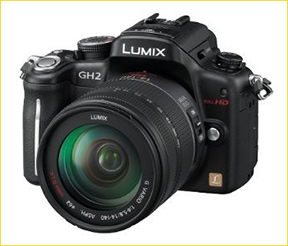
As long rumoured, Panasonic has announced the GH2, its new flagship Micro Four Thirds camera. The GH2 features a 16 Megapixel (18MP depending on the aspect ratio selected) sensor which can shoot at up to five FPS.
From a video perspective (the GH1’s greatest strength, and weakness) the GH2 seems to have seriously upped the ante, with AVCHD output at 1080/60i and 1080/24P. The camera actually shoots 1080/60p which is output at the other speeds, including offering variable frame rates for in-camera slo-mo.
The increased capture rate also leads to a faster refresh rate, which should provide a superior preview image as well as faster focus tracking. As with the G2, the GH2 uses a touch screen.
There are two new lenses, the Lumix G Vario 100-300mm F4-5.6 OIS and a 14mm F2.5 “pancake” wide angle.
There is more new technology here than one can shake a stick at, so just a few words here isn’t going to be able to summarize it all. Panasonic UK hascomprehensive specsavailable. DPReview hasa previewavailable as well.
As soon as I have a sample for an in-depth field test I’ll let you know.
Leica
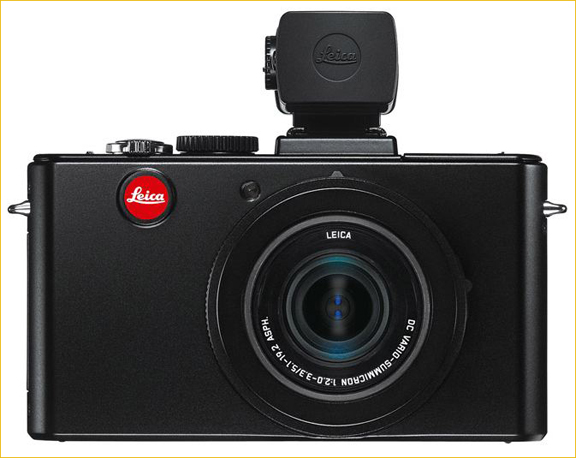
The LEICA D-LUX 5 is a small sensor 10 Megapixel pocket camera with a new VARIO-SUMMICRON 5.1 – 19.2 mm f/2 – 3.3 ASPH lens equivalent to 24 to 90 mm in 35-mm format. It offers video in 720P AVCHD-Lite format. An accessory EVF1 electronic viewfinder is also available, similar to the one found on Panasonic MFT cameras.
SeanReid, ofReid Reviews, has just published the first review of the Leica D-Lux 5. Reid Reviews is an independent subscription-based site. Sean has also been a contributor to Luminous Landscape for many years now and has been a professional fine art, magazine and commercial photographer for over twenty-five years.
If you’re interested in Leica’s newest baby, you won’t do better than to check outSean’s hands-on review.
Leica also announced the Leica V-LUX 2 (a Superzoom based on the Panasonic DMC-FZ100), an X1 in Black finish and a limited edition M9 in Titanium finish designed in collaboration with Volkswagen Group Chief Designer Walter de’Silva. They’re going to love it in China.
Monday – 20 September
Last Updated – 11:15 am EDT
Pentax K-5

Pentaxhas announced what looks to be a strong entry in the mid-range DSLR market with its new flagship K-5. The camera features a mid-sized body with a 16.3 Megapixel CMOS sensor, in-body stabilization, and 1920X1080 HD video mode with Live View. Frame rates to 7 FPS are available as is sensativity to ISO 51,200, the highest yet in a camera with an APS-C sized sensor.
The K5 will become available in October.
IBC Video Report
Photokina isn’t the only important show in September. TheIBC Exhibitionin Amsterdam just concluded and theHD Warriorweb site has just filed a 19 minute long summary video reportfrom the floor of the show.
If you’re into the latest in prosumer and broadcast video gear, this is a must watch report. There is some interesting coverage of the very exciting Panasonic AF100 (AF101 in Europe) Micro-Four-Thirds pro camcorder that’s definitely worth watching.
Leaf Imaging
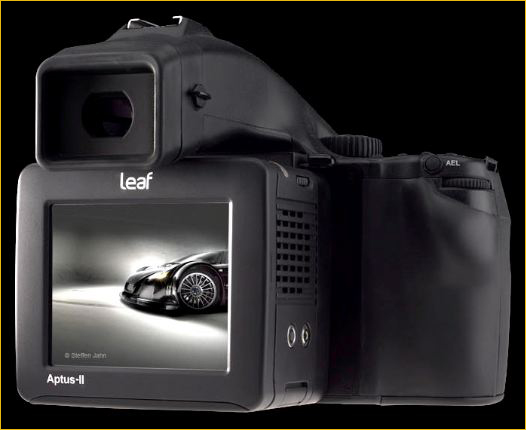
World’s Highest Resolution Medium Format Back Announced
Leaf Imaging today announced theirAptus-II 12 and 12Rbacks, featuring a new 80 Megapixel full frame CCD sensor measuring 53.7 X 40.3mm. (The R version back’s sensor is internally rotating, but otherwise the same as the model 12).
These backs are claimed to have a 12 stop dynamic range, and are able to shoot at 1.5 frames / second, producing a 480MB file. The backs also feature a 6X7mm touch screen. Phase One and Mamiya 645DF and AF cameras as well as most Hasselblad V models are supported.
ALPA
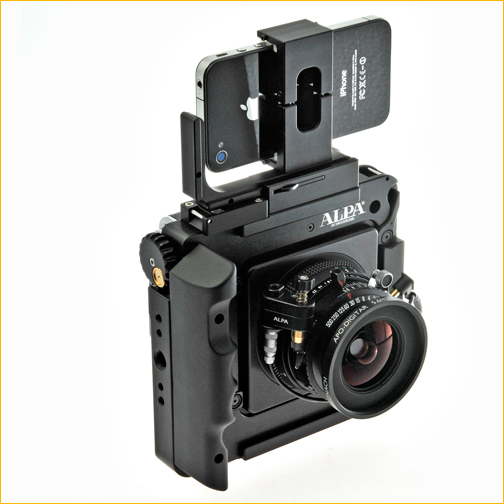
ALPA, the venerable Swiss manufacturer of top quality technical cameras has announced a number of interesting products:
ALPA 12 STC camera.
The new ALPA 12 STC (Stitching/Shift Travel Compact) is a very small camera with rear shift movements that are mounted on roller bearings. It is ideal for panoramics.
ALPA Sync Release
All digital backs need synchronization between the shutter and the back. In addition some Phase One and Hasselblad devices need a “wake-up” signal before the exposure. The ALPA Sync Release offers a unique selection of synchronisation solutions for tripod and hand held use.
ALPA HPF High Precision Focusing Rings
Certain photographic applications need accurate scale focusing on the lenses. Unfortunately, lens focusing scales to date have never been particularly good. The new ALPA HPF rings are retrofittable scales that offer tremendous accuracy. This allows, for example, the use of a laser rangefinder for extremely accurate focus.
ALPA iPhone® holder
The new ALPA iPhone® holder is a secure mount that fits all ALPA 12 models and allows mounting of an iPhone on top of the camera. The iPhone can then be used as an electronic viewfinder, a GPS logger, a control unit for electronic shutters, a digital notepad, etc.
ALPA is also introducing a new version of its lens corrector software and several new lenses in ALPA mount, including a 32 mm Rodenstock Digaron, a Schneider Super Digitar 28 mm XL, and a Schneider Apo-Digitar 60 mm XL.
You can see a more complete description of these items, as well as some pictures,here.
I expect to get my hands on these items before the end of next week, and hopefully I will be able to bring some of these items back home from Photokina. I will report on my field tests of these items once they are completed.
Arca Swiss

Arca Swiss has announced two new cameras in its “R” line; the Rmd2 and Rmd3i. Mark will be visiting Arca during the show and will file a more extensive report on these updated cameras later in the week.
You may be interested in Mark and Michael’sextensive review of the Rm3d published here last summer. It includes a 30 minute streaming video on its use and features.
Fujifilm X-100

Winning the “cool” award so far this week (and it’s only just begun), is FujiFilm with its large sensor fixed-lens Leica rangefinder look-alike.
TheX100, which is reported to cost about US $1,000 when it becomes available in March 2011 (UPDATED INFO), has a fixed 23mm f/2 lens (35mm equiv) and a fascinating optical viewfinder which is combined with an EVF to, theoretically at least, provide the best of both worlds.
You can bet that we’ll be reviewing this little baby as soon as a sample becomes available.
You can download theX-100 brochure PDF here.
September, 2010
You May Also Enjoy...
IQ260 Story
Whom is This Article For? The recently announced Phase One IQ260 represents a major achievement: it uses a Dalsa sensor which is capable of long


